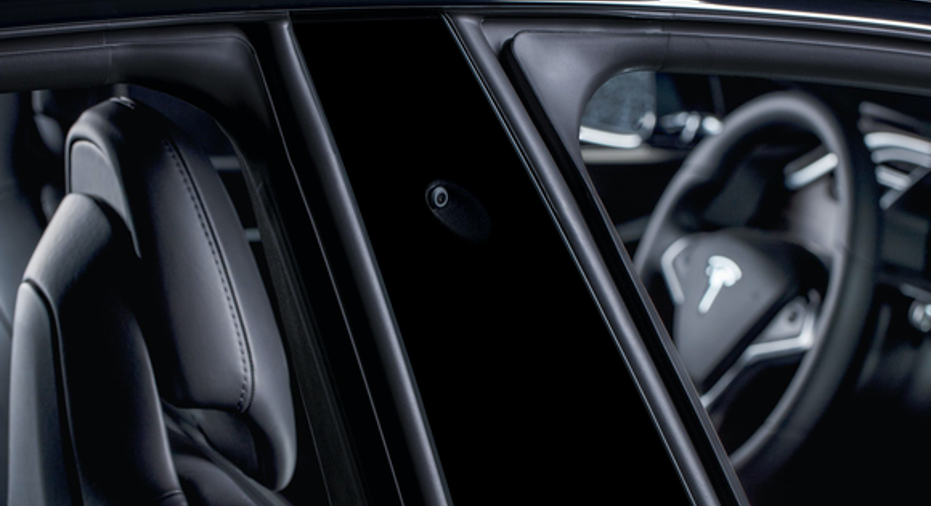Tesla: All New Vehicles Are Shipped With Sensors for Autonomous Driving

Tesla vehicles now have the sensors to drive themselves. Image source: Tesla Motors.
On Wednesday evening, electric-car maker Tesla Motors (NASDAQ: TSLA) said all new vehicles -- whether they are Model S, X, or 3 -- will ship with the hardware necessary for fully autonomous driving.
The big catch? Tesla will deploy software updates that actually make the vehicles autonomous over time, and only as regulation allows. In other words, it's still unclear when an autonomous Tesla will be actually possible.
Moving toward autonomy
"We are excited to announce that, as of today, all Tesla vehicles produced in our factory -- including Model 3 -- will have the hardware needed for full self-driving capability at a safety level substantially greater than that of a human driver," Tesla said in a blog post on Wednesday.
To demonstrate the new hardware suite's capabilities, Tesla posted a video on its website of a Tesla Model X driving itself through urban streets, merging onto a highway, exiting a highway, and navigating to a parking spot -- all occurring with "no human input at all," Tesla CEO Elon Musk confirmed on Twitter after the video was posted.
Tesla side pillar Autopilot senor. Image source: Tesla Motors.
The new set of sensors going into Tesla vehicles in order to eventually make this possible include eight surround cameras for 360-degree visibility with as much as 250 meters of range, 12 updated ultrasonic sensors to add redundancies to the cameras, and forward-facing radar (which Tesla recently enhanced to serve as a primary control sensor alongside Tesla's vision system).
These sensors represent a major upgrade compared to the first hardware suite for Tesla's Autopilot, which Musk now refers to as "hardware one." Hardware one was made up of forward radar, a forward-looking camera, and 12 ultrasonic sensors.
Of course, all of these new sensors will require far more processing power for Tesla to process all of this data rapidly enough in order to autonomously navigate roads. This is where Tesla's new, internally developed "Tesla Vision" comes into play.
It will take time
It should be emphasized that even though Tesla is shipping this new sensor suite in every vehicle, they are not yet self-driving. Indeed, vehicles with the new hardware will actually "temporarily lack certain features currently available on Teslas with first-generation Autopilot hardware," the company said in its Wednesday blog post.
Before Tesla activates the new hardware sensors, the company will calibrate the system by collecting millions of miles of real-world driving from its fleet "to ensure significant improvements to safety and convenience."
Further, even after the capabilities of the Tesla vehicles with hardware two catch up to the driver-assist features from hardware one, many potential updates could be limited by regulatory hurdles.
Tesla's website clearly notes there's no certainty as to when self-driving functionality will be achieved (emphasis Tesla's):
It's not cheap
While this new hardware suite is delivered with every new Tesla, access to the enhanced Autopilot or -- eventually -- the self-driving features, doesn't come cheap.
Model S. Image source: The Motley Fool.
As was already the case, active safety features, such as collision avoidance and automatic braking, come standard with every Tesla vehicle (though these features won't be available until December 2016, when they are rolled out via an over-the-air software after more calibration). But to upgrade to "Enhanced Autopilot," which is similar to the current driver-assist features on Autopilot, will cost $5,000 before delivery, or $6,000 after delivery. And to get access to full self-driving capability (whenever it's available), buyers will have to pay an additional $3,000, or $4,000 after delivery.
As long as Tesla can truly improve safety, roll out improved driver-assist features, and eventually deliver on its promise with an update that makes these cars self-driving, this is good news for Tesla's business. Not only could it help Tesla sell vehicles, but it could potentially boost the company's profit margin.
The big question here (and it's a big one) is if and when Tesla can live up to the strong marketing behind these new features.
A secret billion-dollar stock opportunity The world's biggest tech company forgot to show you something, but a few Wall Street analysts and the Fool didn't miss a beat: There's a small company that's powering their brand-new gadgets and the coming revolution in technology. And we think its stock price has nearly unlimited room to run for early, in-the-know investors! To be one of them, just click here.
Daniel Sparks owns shares of Tesla Motors. The Motley Fool owns shares of and recommends Tesla Motors. Try any of our Foolish newsletter services free for 30 days. We Fools may not all hold the same opinions, but we all believe that considering a diverse range of insights makes us better investors. The Motley Fool has a disclosure policy.



















